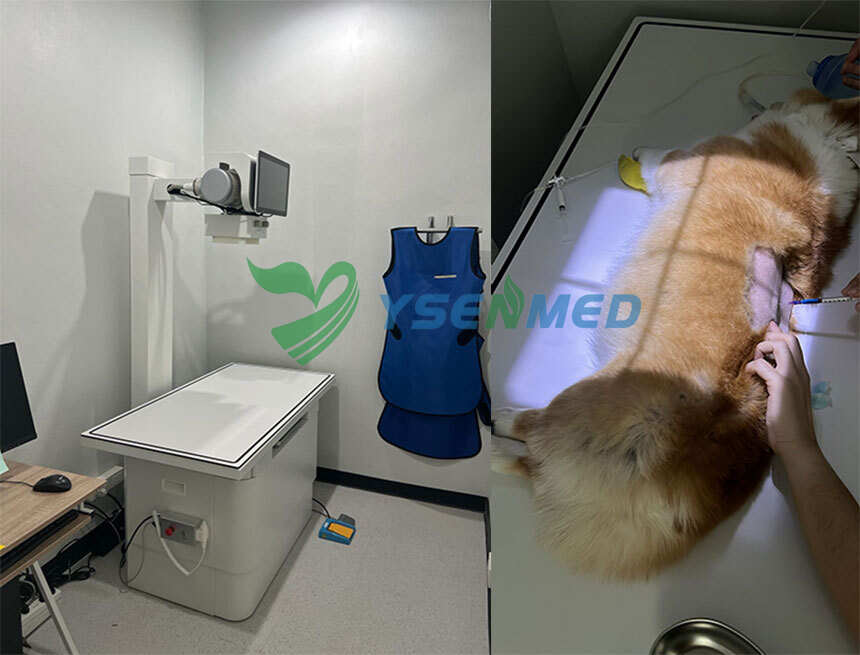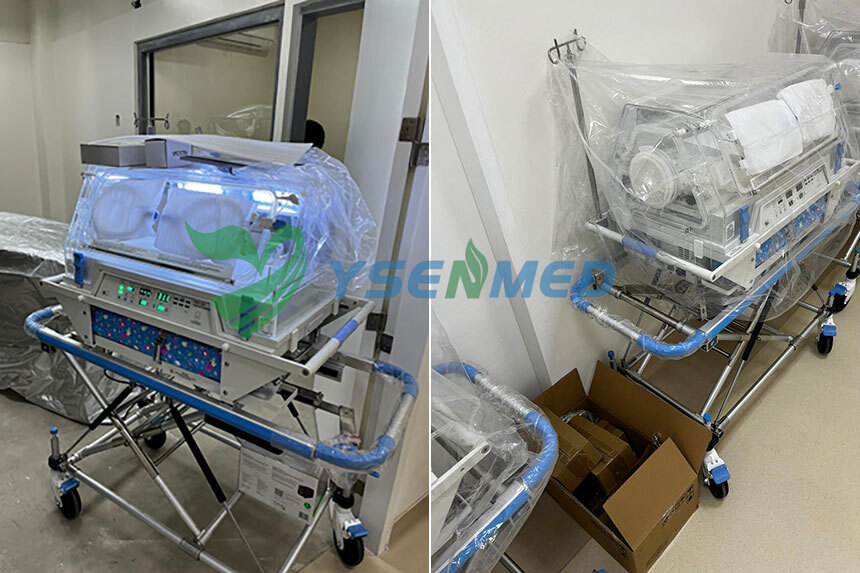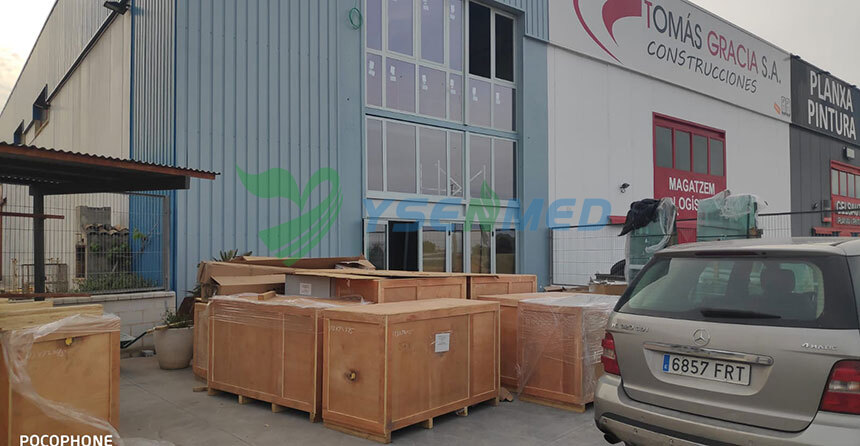Title: High Definition Endoscopy: Transforming the Future of Medical Imaging
Introduction
High Definition Endoscopy (HDE) is revolutionizing the way medical professionals visualize internal organs and tissues, enabling a new level of diagnostic precision and patient care. This advanced technology, with its clear and detailed imaging, is transforming endoscopic procedures across various medical fields, from gastroenterology and pulmonology to urology and gynecology. In this comprehensive guide, we explore the impact of high definition endoscopy on medical imaging, the technological advancements driving this innovation, and its implications for the future of healthcare.
Understanding High Definition Endoscopy
Endoscopy is a minimally invasive technique that allows medical professionals to examine the inside of a patient's body using a flexible tube with a light source and camera. High definition endoscopy elevates this process by providing significantly higher resolution and clarity, allowing for more accurate visualization of internal structures. This enhanced imaging capability is a game-changer in diagnosing and treating a variety of conditions, offering greater detail and depth compared to traditional endoscopy systems.
Key Features of High Definition Endoscopy
High definition endoscopy brings several key features to the medical imaging landscape, contributing to its transformative impact:
Superior Image Quality:
HDE systems deliver high-resolution images with enhanced clarity and detail, allowing clinicians to detect subtle abnormalities, lesions, and other diagnostic cues. This superior image quality enables early detection and precise diagnosis, leading to more effective treatment plans.
Wide Field of View:
HDE provides a broader field of view, allowing medical professionals to examine a larger area within a single frame. This feature is particularly valuable during complex endoscopic procedures, where a comprehensive view can aid in guiding interventions and avoiding complications.
Enhanced Color Differentiation:
High definition endoscopy offers improved color differentiation, making it easier to distinguish between normal and abnormal tissues. This enhanced color accuracy is crucial for identifying changes in tissue health, such as inflammation, bleeding, or precancerous lesions.
Integration with Advanced Imaging Technologies:
HDE systems often integrate with other advanced imaging technologies, such as narrow-band imaging (NBI) and chromoendoscopy, which enhance visualization of specific tissue types. These integrations further improve diagnostic capabilities and enable more targeted therapeutic interventions.
Applications of High Definition Endoscopy
High definition endoscopy finds applications across a wide range of medical specialties. Let's explore how this technology is transforming medical imaging in various clinical settings:
Gastroenterology:
In gastroenterology, HDE is used to perform diagnostic and therapeutic procedures within the gastrointestinal (GI) tract. With high-resolution imaging, clinicians can identify polyps, ulcers, and other abnormalities with greater accuracy. HDE plays a crucial role in colonoscopy, upper endoscopy, and endoscopic retrograde cholangiopancreatography (ERCP), aiding in the early detection of gastrointestinal cancers and other diseases.
Pulmonology:
In pulmonology, high definition endoscopy is employed during bronchoscopy to examine the respiratory system, including the trachea, bronchi, and lungs. The superior imaging capabilities of HDE enable pulmonologists to detect airway obstructions, lung nodules, and other pulmonary conditions with precision, facilitating early intervention and treatment planning.
Urology:
In urology, HDE is used for cystoscopy and other endoscopic procedures to examine the urinary tract and bladder. The enhanced image quality allows urologists to identify bladder tumors, stones, and other abnormalities with greater clarity, leading to improved diagnostic accuracy and targeted treatments.
Gynecology:
In gynecology, high definition endoscopy is utilized during hysteroscopy and laparoscopic procedures to examine the uterus, fallopian tubes, and other reproductive organs. The high-resolution imaging aids in diagnosing gynecological conditions, such as endometriosis and fibroids, allowing for minimally invasive interventions with reduced patient discomfort and recovery time.
Otolaryngology (ENT):
In otolaryngology (ENT), HDE is used to examine the ear, nose, and throat. The superior image quality enables ENT specialists to diagnose conditions such as nasal polyps, sinusitis, and laryngeal abnormalities with greater accuracy. This level of detail supports effective treatment planning and surgical guidance during minimally invasive ENT procedures.
Benefits of High Definition Endoscopy
The benefits of high definition endoscopy extend beyond its superior image quality and diagnostic accuracy. Here are some additional advantages that contribute to its transformative impact on medical imaging:
Minimally Invasive Procedures:
HDE enables minimally invasive procedures, reducing the need for open surgery and promoting faster recovery times for patients. This approach minimizes trauma to the body, decreases the risk of complications, and shortens hospital stays, leading to improved patient satisfaction.
Real-Time Imaging and Intervention:
High definition endoscopy provides real-time imaging, allowing clinicians to visualize internal structures as they perform diagnostic and therapeutic procedures. This real-time feedback is crucial during complex interventions, helping clinicians make precise decisions and adjust their approach as needed.
Improved Workflow and Efficiency:
HDE's superior image quality and enhanced features contribute to improved workflow and efficiency in clinical settings. Clinicians can conduct endoscopic procedures more quickly and accurately, reducing the need for repeat examinations and optimizing resource utilization.
Enhanced Patient Safety:
The minimally invasive nature of high definition endoscopy contributes to enhanced patient safety. By reducing the need for open surgery and minimizing tissue damage, HDE lowers the risk of complications and promotes a smoother recovery process for patients.
Expanded Clinical Applications:
High definition endoscopy opens the door to expanded clinical applications, allowing clinicians to explore new diagnostic and therapeutic approaches. With its superior imaging capabilities, HDE is well-suited for research and development in emerging medical fields, driving innovation and advancing medical knowledge.
Conclusion
High definition endoscopy is transforming the future of medical imaging, offering superior image quality, enhanced diagnostic accuracy, and a wide range of clinical applications. With its advanced features, HDE is empowering clinicians to perform minimally invasive procedures, make precise diagnoses, and deliver effective treatments across various medical specialties. As healthcare continues to evolve, high definition endoscopy will play an increasingly important role in advancing patient care, improving outcomes, and driving innovation in medical imaging.
High Definition Endoscopy in Medical Education
High definition endoscopy is not only transforming clinical practice but also revolutionizing medical education and training. The high-resolution images and detailed visualization capabilities of HDE are invaluable tools for teaching and learning in medical schools, residency programs, and continuing medical education.
Enhanced Learning Experiences:
With high definition endoscopy, medical students and trainees can gain a more accurate understanding of anatomy and pathology. The detailed images provided by HDE allow for a deeper exploration of internal structures, helping students visualize and understand complex medical concepts. This clarity is especially beneficial during hands-on training, where precise visualization is critical.
Real-Time Collaboration and Mentorship:
HDE systems can be used for real-time collaboration and mentorship between experienced clinicians and trainees. During endoscopic procedures, instructors can guide trainees through the process, pointing out key anatomical features and teaching best practices. This collaborative approach enhances the learning experience and ensures that new practitioners develop the necessary skills for successful endoscopic procedures.
Recording and Review:
High definition endoscopy allows for the recording and review of endoscopic procedures, providing valuable educational resources for medical students and clinicians. Recorded procedures can be used for case studies, clinical research, and quality improvement initiatives, contributing to the ongoing development of medical knowledge and best practices in endoscopy.
High Definition Endoscopy and Patient-Centered Care
High definition endoscopy is closely aligned with patient-centered care, emphasizing the importance of patient comfort, safety, and satisfaction. The minimally invasive nature of HDE, combined with its diagnostic accuracy and efficiency, contributes to improved patient experiences and outcomes.
Reduced Discomfort and Recovery Time:
The minimally invasive approach of HDE reduces patient discomfort during endoscopic procedures and accelerates recovery times. This is particularly significant for patients undergoing diagnostic or therapeutic interventions, as they can often return to normal activities more quickly compared to traditional surgical approaches.
Enhanced Communication with Patients:
The detailed images provided by high definition endoscopy can be used to improve communication with patients about their diagnoses and treatment options. Clinicians can use these images to explain medical conditions in a way that is easily understood, fostering patient engagement and shared decision-making.
Early Detection and Preventive Care:
High definition endoscopy's superior diagnostic accuracy allows for early detection of various medical conditions, enabling preventive care and reducing the risk of complications. By identifying issues at an earlier stage, clinicians can implement effective treatment plans that improve patient outcomes and reduce healthcare costs.
The Future of Minimally Invasive Procedures with High Definition Endoscopy
As high definition endoscopy continues to evolve, it is expected to play a central role in the future of minimally invasive procedures. The advancements in HDE technology are driving innovation in various medical fields, leading to new diagnostic and therapeutic possibilities.
Integration with Robotics and Artificial Intelligence:
The integration of high definition endoscopy with robotics and artificial intelligence (AI) is an exciting frontier in medical technology. Robotic-assisted endoscopy, guided by high-resolution imaging, allows for greater precision during complex procedures. AI algorithms can analyze endoscopic images to detect patterns and abnormalities, assisting clinicians in making accurate diagnoses.
Expansion of Endoscopic Therapies:
High definition endoscopy is paving the way for expanded endoscopic therapies, allowing clinicians to perform a wider range of minimally invasive interventions. From endoscopic suturing and stenting to ablation and tissue resection, the enhanced visualization capabilities of HDE are enabling more advanced therapeutic techniques that reduce the need for traditional surgery.
Enhanced Collaboration and Telemedicine:
The high-resolution images produced by high definition endoscopy facilitate enhanced collaboration and telemedicine applications. Clinicians can share real-time endoscopic images with colleagues across different locations, allowing for expert consultation and second opinions. This connectivity supports multidisciplinary collaboration and improves patient care, especially in remote or underserved areas.
Conclusion
High definition endoscopy is transforming the landscape of medical imaging and minimally invasive procedures, offering superior image quality, enhanced diagnostic accuracy, and improved patient-centered care. Its impact extends beyond clinical practice to medical education, patient communication, and the future of medical technology. As HDE continues to advance, it is expected to drive innovation and expand the boundaries of what is possible in medical imaging and endoscopic interventions.
By embracing the capabilities of
high definition endoscopy, healthcare providers can improve diagnostic outcomes, reduce patient discomfort, and contribute to a more efficient and patient-centered healthcare system. As we look to the future, the integration of HDE with robotics, artificial intelligence, and telemedicine will open new doors for minimally invasive procedures and collaborative patient care.




